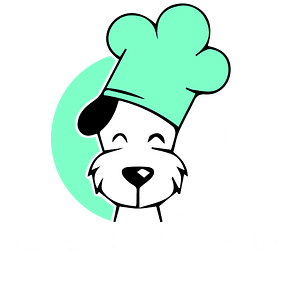Wondering if millet is safe for your dog? You’re in the right place! Many dog owners are looking for new and healthy foods for their pets. Millet is a nutritious grain that might be perfect for your furry friend. But can dogs really eat millet?
In this guide, we’ll tell you all about the benefits of millet, how to feed it to your dog, and much more. Stay with us to learn why millet could be a great addition to your dog’s diet and get helpful tips on making their meals even better!

Table of Contents
Toggle1. What Is Millet?
Millet is a small but nutrient-dense grain that humans have consumed for about seven thousand years. It is a staple food in many Asian and African countries and is known for its health benefits.
Millet is gluten-free, making it an excellent option for those with gluten sensitivities. It is also used to feed many animals and birds.
2. Health Benefits Of Millet For Dogs
Millet offers several health benefits for dogs, providing important nutrients like protein, fiber, and minerals.
Here are some of the key benefits:
1. Improves Digestive Health:
Millet contains a good amount of soluble and insoluble dietary fiber. As a prebiotic, soluble fiber promotes healthy gut flora, improves nutrient absorption, and maintains digestive health in general.
Insoluble fiber gives stool more volume, which encourages regularity and guards against constipation and diarrhea. For dogs with delicate stomachs or grain allergies, millet is a great option because it digests more easily than other grains.
2. Controls blood sugar:
Millet contains complex carbohydrates that digest slowly, helping to regulate blood sugar levels. This low-glycemic-index food is beneficial for diabetic dogs or those prone to blood sugar fluctuations.
3. Rich in antioxidants:
Millet is packed with antioxidants such as phenolic compounds, flavonoids, and tannins. These antioxidants combat free radicals, protecting your dog from health issues like skin allergies, arthritis, respiratory diseases, heart diseases, and joint problems.
4. Great Source of Vitamin B:
Millet provides a range of B vitamins, including niacin (B3), riboflavin (B2), pantothenic acid (B5), and vitamin B6. B vitamins are crucial for enzyme function, energy conversion, a healthy nervous system, and digestion.
5. Provides essential minerals:
Millet is rich in minerals like iron, magnesium, phosphorus, and potassium. These minerals are vital for red blood cell formation, muscle health, nerve function, kidney function, and maintaining strong bones and teeth.
6. Gluten-Free Grain:
As a gluten-free grain, millet is suitable for dogs with gluten intolerance or wheat allergies. It promotes easy digestion, healthy skin and coat, and supports weight management.
3. Can Dogs Eat Millet Flour?

Yes, dogs can eat millet flour in moderation. Millet flour is a great way to incorporate millet into your dog’s diet. You can use it to bake treats or pancakes at home. Ensure the millet flour is thoroughly cooked to make it easier for your dog to digest.
4. Can Dogs Eat Cooked Millet?

Dogs can indeed eat cooked millet. It can be a nutritious addition to their diet, offering variety and palatability. Combine cooked millet with lean protein or vegetables to create a balanced meal. You can also use millet in homemade treats mixed with ingredients like pumpkin puree, mashed bananas, or sweet potatoes.
5. Can Dogs Eat Millet Porridge?
Millet porridge can be a healthy addition to your dog’s diet if cooked properly. Cook millet in water until it reaches a porridge-like consistency. This delicious option can make mealtime more exciting for your dog, providing them with essential carbohydrates for energy.
6. Can Puppies Eat Millet?
Yes, puppies can eat millet. It is a balanced food containing vitamins, minerals, and proteins essential for their growth and development. Cooked millet is particularly beneficial for puppies’ developing digestive systems.
7. How To Cook Millet For Dogs
To maximize millet’s nutritional benefits, it should be properly cooked and served. Here’s a simple method:
8. Select High-Quality, Organic Millet.

Rinse the millet with cold water to remove dirt.
In a pan, combine two cups of millet with four cups of water.
Decrease the heat and simmer for 15-20 minutes until the millet is soft and has absorbed the liquid.
Let it cool to room temperature before serving.
Start with a small portion and monitor your dog’s health. You can raise the dosage gradually if there are no negative effects.
Conclusion
Millet is a gluten-free grain that supports your dog’s optimal health. It improves digestive health, regulates blood sugar, and provides essential nutrients. Whether in flour, cooked, or porridge form, it can be a valuable addition to your dog’s diet. Puppies can also benefit from its nutritional profile. Follow the cooking tips provided to ensure your dog enjoys this healthy grain safely.
FAQs
What Is Millet?
Millet is a nutrient-rich, gluten-free grain that has been a staple in Asia and Africa for thousands of years.
What Are The Health Benefits Of Millet For Dogs?
Millet supports digestive health, controls blood sugar, provides antioxidants, and is rich in B vitamins and essential minerals.
Can Dogs Eat Millet Flour?
Yes, millet flour can be used in homemade dog treats when cooked thoroughly.
Can Puppies Eat Millet?
Yes, millet is beneficial for puppies’ growth and development due to its easy digestibility and nutritional content.
What Is The Best Way To Feed Millet To Dogs?
Cooked millet can be mixed with lean proteins or vegetables to create a nutritious meal or used in homemade treats.
This revised article is informative, easy to read, and follows best practices for SEO without keyword stuffing.

